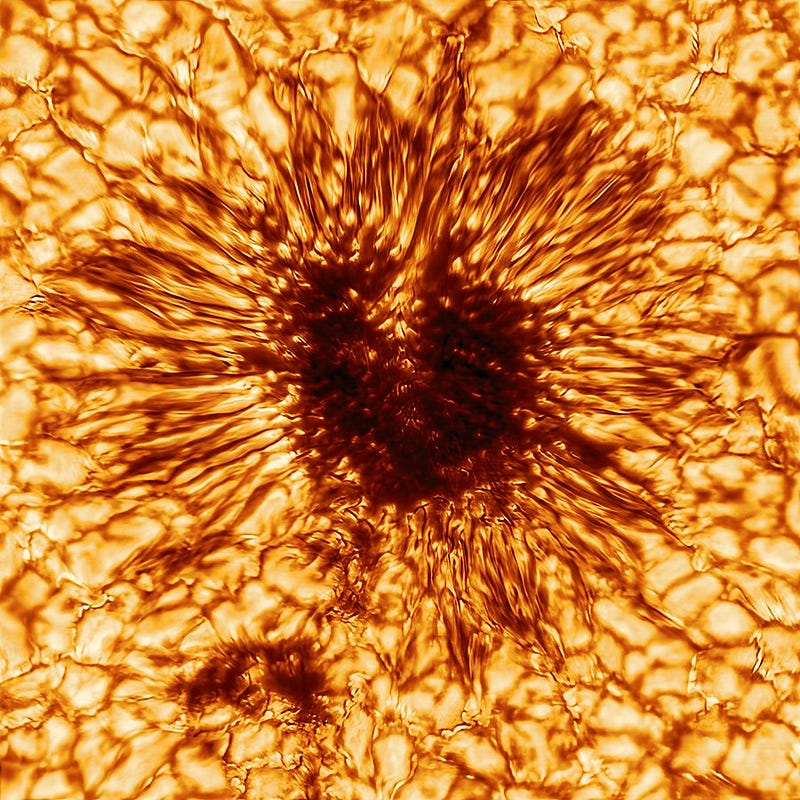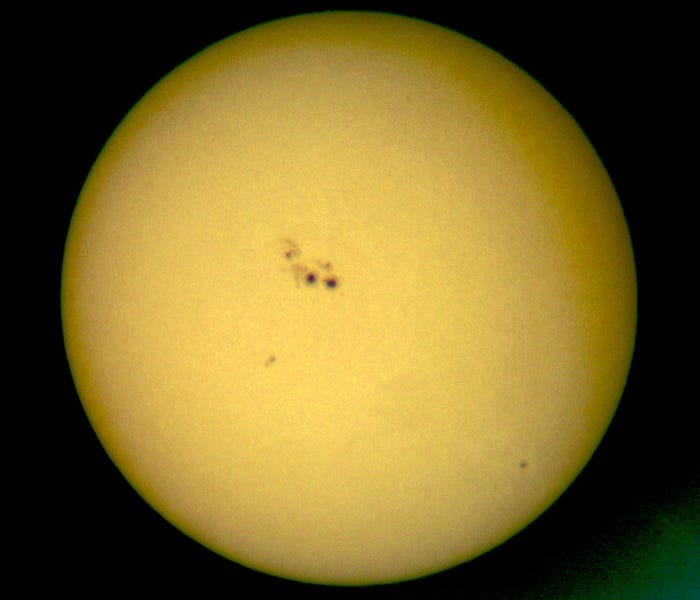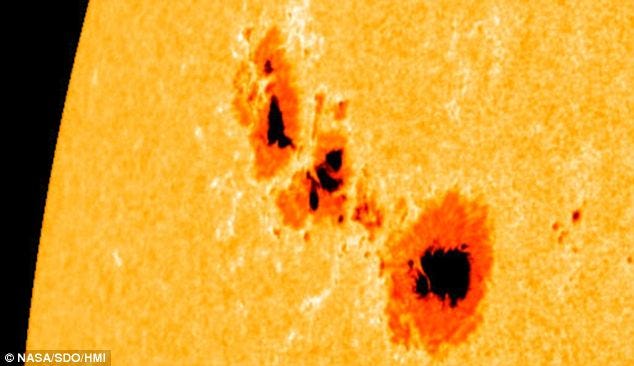Unveiling the Secrets of Sunspots: A Historical Perspective
Written on
Chapter 1: The Discovery of Sunspots
More than 400 years ago, the existence of sunspots was first confirmed, lending credence to Copernicus's heliocentric theory. Sunspots are areas on the Sun's surface that are notably cooler than their surroundings, and they were meticulously documented by a young Dutch astronomer in 1611.

[Photo: NSO/NSF/AURA, CC BY 4.0, via Wikimedia Commons]
In early 1611, David Fabricius, renowned for discovering the first variable star, and his son Johannes, aged 24, gazed at the night sky from their home in Osteel, Germany. They were equipped with a telescope, a novel instrument that Johannes had recently acquired from the Netherlands.

[Photo: SiriusB, Creative Commons Attribution-Share Alike 3.0 Unported, via Wikimedia Commons]
Section 1.1: The Initial Observations
On the morning of March 9, Johannes aimed his telescope at the rising Sun and discovered darker patches on its surface. This intriguing find prompted him to convince his father to continue their observations. Initially, they used the telescope, but Johannes later resorted to an optical darkroom and a simple pinhole camera to protect his eyesight.
The spots moved across the Sun's surface, disappearing at the western edge only to reemerge at the eastern edge two weeks later, traversing westward once again. Johannes deduced that the Sun must be rotating on its axis, asserting that these spots were not merely clouds or external objects, but rather features on the solar surface itself.
Subsection 1.1.1: The Clash of Ideas

[Photo: NASA, Public domain, via Wikimedia Commons]
However, David struggled to accept his son's revolutionary ideas. As a practicing Lutheran, the notion of a rotating Sun contradicted the prevailing geocentric model of the Universe. The widespread acceptance of Copernican theory was still a distant prospect.
Meanwhile, Johannes dedicated himself to further research, ultimately producing a 22-page treatise titled “De Maculis in Sole Observatis et Apparente earum cum Sole Conversione Narratio.” Unfortunately, his work went largely unnoticed at the time, overshadowed by the emerging debates between Galileo Galilei and Christoph Scheiner over the discovery of sunspots, both of whom developed their conclusions after Johannes.
Tragically, Johannes passed away at the young age of 29, never witnessing the recognition of his contributions. A year later, his father met a violent end at the hands of an irate villager, whom he had accused of theft.
Section 1.2: Understanding Sunspots
A sunspot is essentially a dark region within the photosphere of our solar system's star. These phenomena typically appear in clusters, with the largest spots measuring over 50,000 km in diameter. While they may seem almost black, this is actually an optical illusion caused by the temperature disparity between the spots and the surrounding areas of the Sun.
Chapter 2: The Legacy of Sunspot Discoveries
In the video titled "All the History You Didn't Need to Know - Copernicus," viewers will delve deeper into the implications of sunspot discoveries and their connection to historical astronomical theories.
The video explores the significance of these findings in the context of the broader scientific revolution and how they influenced our understanding of the universe.
Did you enjoy this article? Feel free to leave a comment, share some claps, or consider leaving a tip to support my work. Your encouragement inspires me to continue creating engaging content. Follow me for daily updates and new articles! Thank you!